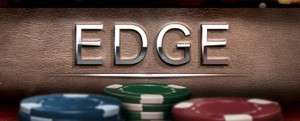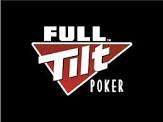Full Tilt Launches Revamped Loyalty Programs
On Monday, we discussed some of the changes that would be made to Full Tilt Poker’s loyalty program, as previewed Full Tilt Managing Director Dominic Mansour last week. We said that no time frame for the implementation of those changes had been made known, but apparently that time frame was “very soon,” as the new loyalty program was put into effect yesterday.
So far, Full Tilt is quite excited about how it has gone. In a message to the media this afternoon, Full Tilt said that it experienced a “remarkable result,” witnessing a “surge in the number of unique players” and nearly a half million hands of the new mini-game called “The Deal” were played. As we did not have much information about “The Deal” when we talked about it earlier this week, let’s take a look at what it is all about.
“The Deal” is an ongoing promotion for members of the Players Club, the new loyalty program put into place to appeal to recreational players on Full Tilt. Players can launch the mini-game via either the Cashier or a button on the game tables. Players buy-in to the game with a special Coin, upon which time seven cards are presented, face down. Players then select two cards to discard and the remaining five cards are flipped over to reveal a poker hand. Prizes are distributed based on the strength of the hand, as follows:
Royal flush – chance for The Deal Jackpot
Straight flush – $200
Four of a kind – $20
Full house – 1,000 Full Tilt Points
Flush – $2 Ring Game Ticket
Straight – $1 Tournament Ticket
Three of a kind – $1K The Deal Freeroll ticket
Two pair – 1 Coin
One pair – 20% Coin progress
Ace high – $1K The Deal Freeroll satellite ticket
High card – No prize
The Jackpot is a progressive jackpot which has 3 cents added to it every time someone plays The Deal. When someone hits it, they receive 80 percent, while the remaining 20 percent is used to fund future Jackpots (not necessarily to seed the next Jackpot, as each starts at $25,000). When someone is dealt a royal flush, they get to spin a wheel with eight sections on it: Jackpot, $3,000, $2,000, $1,000 and four $500 sections. If a players hits the Jackpot, they get half of it, with the other half split amongst everyone who has played “The Deal” within the last 12 hours.
As of the time of this writing, the Jackpot is up over $115,000.
In the first day with the new system, 483,203 hands of The Deal were played and 333,580 prizes were awarded. Nobody hit a royal flush, but seven people had the chance only to discard one of the cards needed to make the Jackpot hand. This would imply that the result of each hand is not predetermined, but rather the seven cards are dealt randomly just like at the poker tables.
One person was extremely active the first day, playing The Deal 3,281 times.
Now about that “Coin” required to play the game. Coins are simply earned through real money play. The more Full Tilt Points a player earns, the faster he earns Coins. Full Tilt does not detail on its site how points correlate to Coins, though it does say that a hand of the The Deal can be played for 20 Full Tilt Points, so the conversion rate might very well be 20 points for one Coin.
The Deal is clearly the big attraction for the Players Club, though it is not the only benefit to Club members. Full Tilt is hosting a number of freerolls every day for members, including Jackpot Sit & Go freerolls, Coin freerolls, and ticket freerolls.
There is also the Weekly Windfall. Players Club members who play real money games on any three days in a week will receive a ticket into a $5,000 Weekly Windfall Flip Freeroll. Those who do that two weeks in a row receive a mystery prize of as much as $1,000 cash.
 The Players Club is just one part of Full Tilt’s new loyalty scheme. For the heavy hitters, the professional grinders, there is Full Tilt Edge, which also underwent changes. We discussed them earlier this week and unfortunately for those players who can best take advantage of the program, the changes were for the worse.
The Players Club is just one part of Full Tilt’s new loyalty scheme. For the heavy hitters, the professional grinders, there is Full Tilt Edge, which also underwent changes. We discussed them earlier this week and unfortunately for those players who can best take advantage of the program, the changes were for the worse.
Those who give Full Tilt plenty of action can advance past the Players Club and to Edge, which has been consolidated to three loyalty levels from six. In order to reach each level, players must average a certain number of Full Tilt Points per day over either a rolling 30-day period or rolling 100-day period. Here’s the breakdown:
Edge: 30-day rolling average of 80 FTP or 100-day rolling average of 70 FTP
Edge Plus: 30-day rolling average of 250 FTP or 100-day rolling average of 150 FTP
Edge Prime: 30-day rolling average of 500 FTP or 100-day rolling average of 400 FTP
Edge level players will receive $1 cashback for every 100 FTP earned, Edge Plus players will get $1.50, and Edge Prime players will earn $2 plus be able to convert their points into cash at a rate of $1 for every 250 FTP.
As mentioned, it looks like the program is now worse for Edge players than it was before. For example, the former Silver level, which awarded the same $1 for 100 FTP as does the current Edge level, require a 30-day rolling average of 35 FTP or a 100-day rolling average of 25 FTP. Those targets are significantly more difficult to hit than the new ones. The case is similar for Gold and Platinum, the former equivalents of Edge Plus and Edge Prime. Hell, the old Diamond level, which paid $2.50 for every 100 FTP, was easier to reach than Edge Prime.
There are also five Edge leader boards: Hold’em, Omaha, Rush Poker, Sit-and-Go’s, and Multi-table tournaments. The top three points earners on each at the end of the month earn cashback multiplier bonuses.
The Edge downgrades combined with the new Players Club were not unexpected, but it is interesting how pronounced they were. The changes to the loyalty program are yet another move by Full Tilt towards becoming the home for recreational poker players on the internet. We’ll see if it works.



















COMMENTS